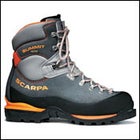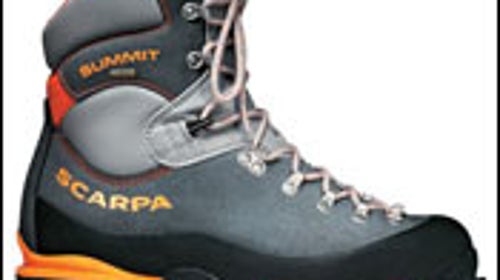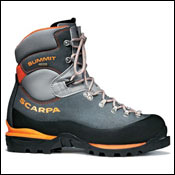Its true that boot technology has evolved in recent years, and that several makers are putting out winter-ready boots that combine new synthetic materials, sometimes with leather, to create boots that are lighter and feel less like concrete overboots than plastics. Scarpas Summit GTX boots ($379; www.scarpa.com), for instance, have waterproofed leather uppers, Gore-Tex liners, and cold-weather insulation. They would work well just about year-around, and particularly well on mountains such as Rainier and Hood.
Scarpa’s Summit GTX boots
 Summit GTX boots
Summit GTX bootsThat said, plastics simply take the guesswork out of the equation. I put on plastics, I KNOW my feet are going to stay dry and warm almost regardless of the conditions. Koflachs Degre boots ($269; www.koflach.com) remain something of a gold standard for an all-around winter mountaineering boot, fine for all but very technical crampon work or super-cold expedition wear. Theyd work great for winter camping and hiking, and are probably the boots that most often touch the top of Rainier.
For something a little warmer and better for more technical work, take a look at the Scarpa Omega ($369). These actually are a double boot, so are very warm indeed. Theyre going to be stiffer than the Koflachs, too, so better for more technical ice work. Theyre maybe not quite as comfy for hiking, particularly on bare ground. Koflachs Arctis Expe boots ($365) are in the same ball park.
As for fit, plastics do seem a little more forgiving. You might try a womans size, as they tend to be narrower in heel. Otherwise, a good boot-fitter can suggest some after-market insoles and other add-ons to help with the fit. The Scarpa Omegas even have a heat-formable liner to help with that.
Youve got your winter gear, now get outside and use it. makes it easy to find nearby slopes just begging for fresh tracks.


